So 6 months ago the world fucking shut down (except the US didn’t actually shut down enough to prevent 200 thousand deaths. I have a lot of angry opinions right now. Anyways.).
Daycare was closed, and my husband and I immediately started trading off watching the toddler while working.

I had no brainpower for anything requiring – well – brainpower.
So I finally pulled out the embroidery kit I bought so long ago that I can’t even remember when I got it (at least 6 years? 8 years?) for a blackwork coif – the Elizabeth Coif from Reconstructing History. (Note, I would never normally recommend a Reconstructing History pattern. However, these were created by Laura Mellin who is an expert in Elizabethan embroidery, and RH is just the distributor).

The pattern. It’s actually rather clever how they’ve drawn it up to give you an idea of what it looks like without needing to embroider each one.
I did actually mock up the coif way back in the day when I first bought it, and found that it was a bit big. I scanned it on a scanner/printer at 90% and found that was a better size for my head. These days you could just print the PDF at 90% to make life easier.
I dug out an embroidery frame from where it was under a yoga mat behind my fabric stash. (Having weird things like this in your stash are great!)
I used a nifty trick I picked up from Koshka the Cat to use a pyrex container as a lightbox, for tracing my pattern onto linen. (Extant coifs show ink patterns where the thread has worn off, so ink is historical even if my high quality fine-tipped pen is not).
I tried to trace this on the linen I had bought from RH with the pattern, and it did not work. The linen was so thick that I couldn’t see through it. I tossed it aside in disgust and pulled up some linen from At The Sign of the Golden Scissors that was leftover from making my husband an 18th century shirt. Ahhh, much better. Thinner and more tightly woven.
I bought 3 skeins of Soie d’Alger black silk thread (which ended up not being enough, I needed 4) from my local store Needle in a Haystack (their website isn’t great, but yay for supporting local embroidery shops, plus they are very communicative over email). This is a spun silk thread, which I understand is less historically accurate than filament silk thread, but I also understand that filament is harder to work with and this being my first embroidery project, I didn’t want to make life too difficult.
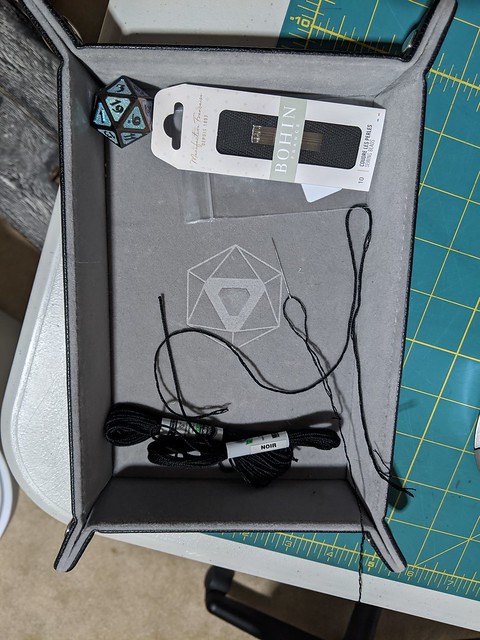
My dice rolling box got temporarily repurposed as my embroidery box. With my favorite D20 hanging out in the corner because it’s just so pretty.
Then I began to embroider – stem stitch for the vines, and backstitch for the various flowers.
And embroider…
And embroider…
I had an existential crisis after finishing the first third, where only having only the outlines done with nothing filling in the patterns looking amateur. I poked around some museums for extant blackwork coifs, and found that there were two main kinds of fills. Counted (where you have a pattern filling it in) and uncounted/shaded (where you just speckle it to give dimension).
Some counted examples:
Some shaded examples:

V&A, T.21-1946. Also my favorite coif of all time because there is a LEOPARD on there! I have got to reproduce this one day.
I started trying to do a counted-fill, but without counting. Unsurprisingly that looked awful and I pulled it right out. So I decided to go with a very simple speckled stitch (also known as seed stitch) because actually doing randomness of speckles for real shading scares me. (Seriously, doing random deliberately is really difficult).
Then all the embroidery was done and it was time for the best part, SPANGLES!
I got real gold-plated spangles from Berlin Embroidery Designs, which cost more than all the rest of the supplies combined, but when I spent months embroidering this thing I figured it deserved the shiniest.
Tacky AF AND historically accurate, my favorite!

And a snapshot of the back, just for fun:
And then all the embroidery was done! To finish it off I cut another piece of linen, turned in the seam allowance, and sewed them together. (For some reason historical pieces don’t seem to be lined which is unusual – usually you wouldn’t want something like this touching your hair oils, so I wonder if folks were usually wearing these over another covering. More research needed).
I bought 2 yards of a hand-woven silk ribbon for the tie, and then it was done for real!
Now I just need a dress to wear with it. And for the world to not be a pandemic so I can actually be with people again.

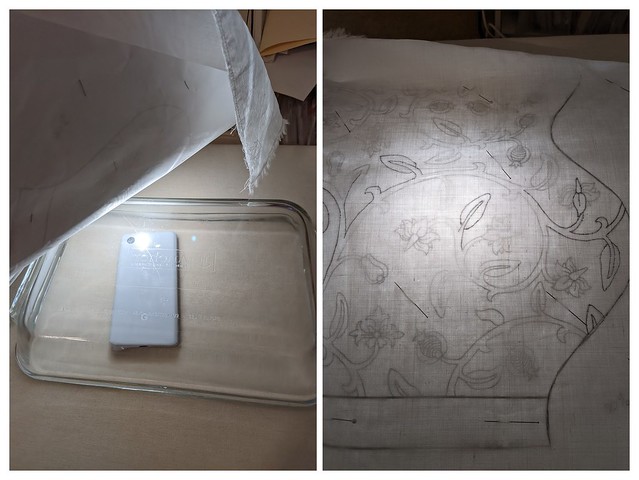


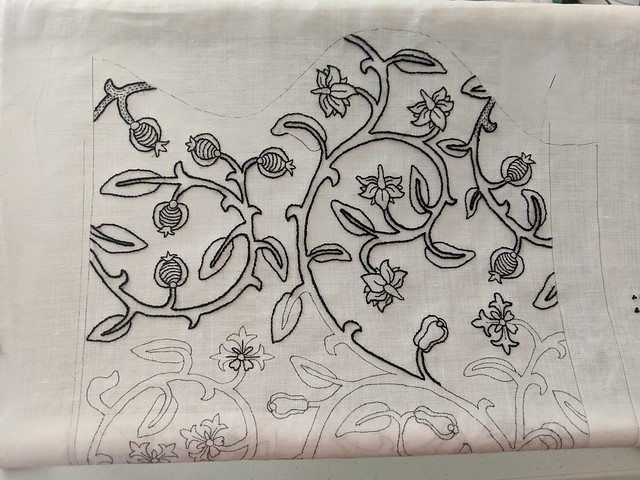
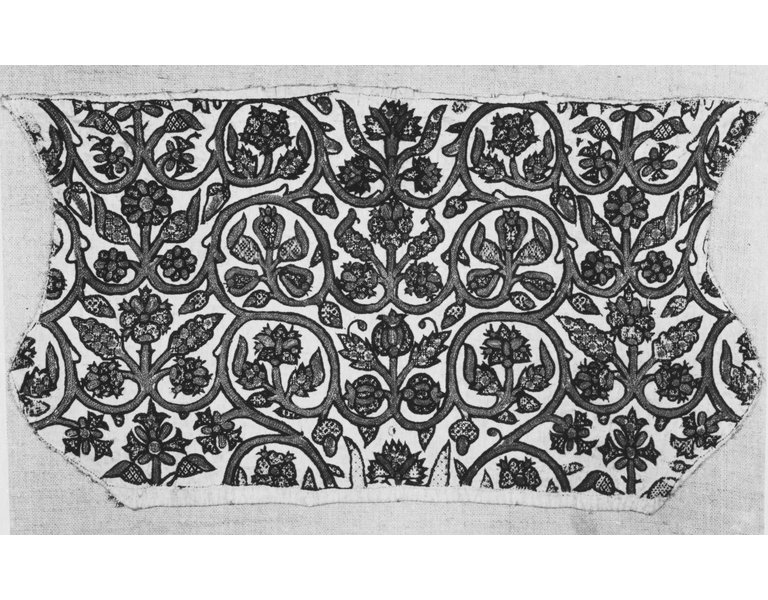
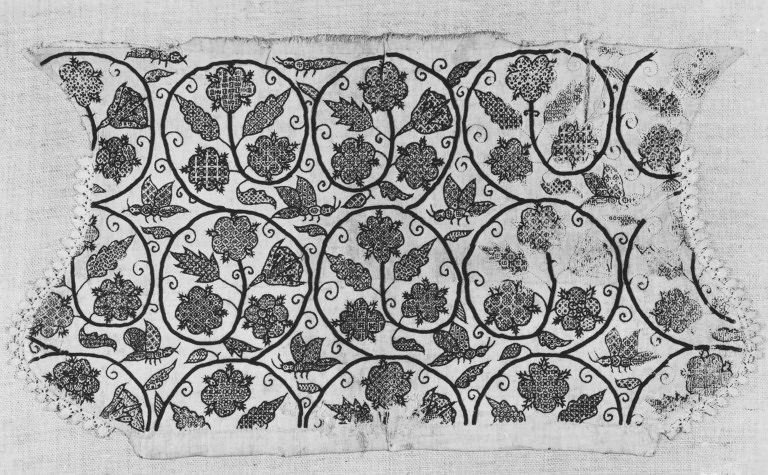


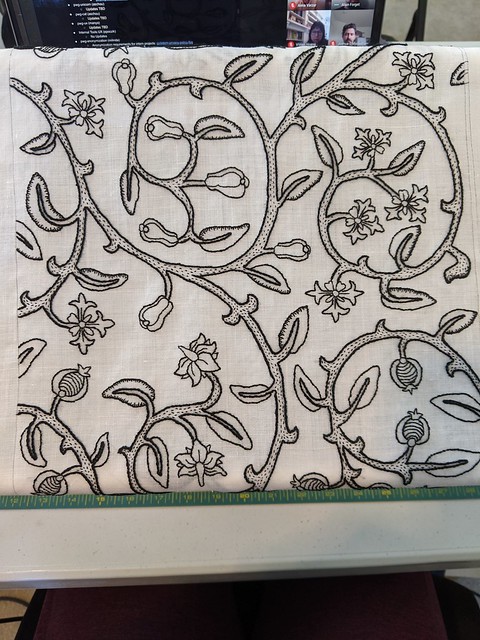
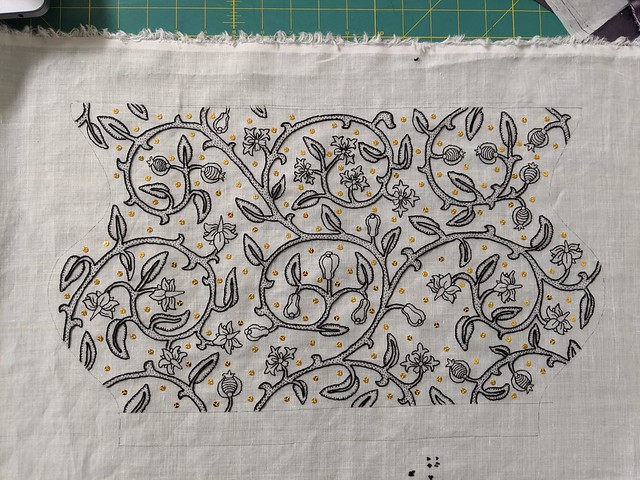
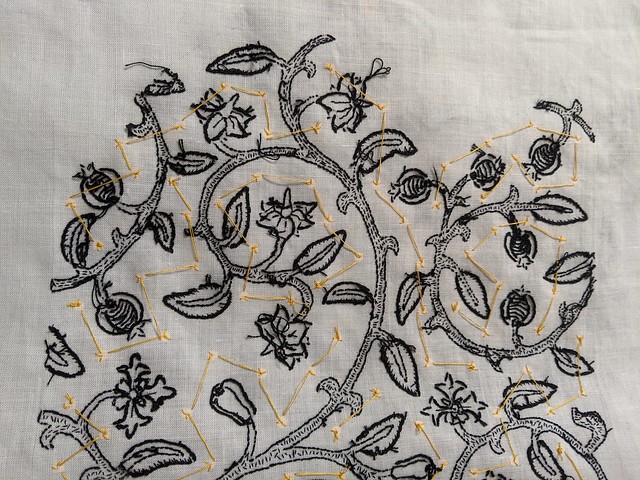
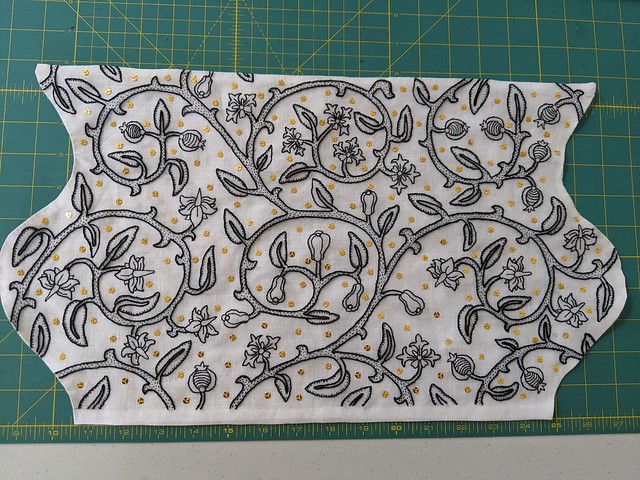

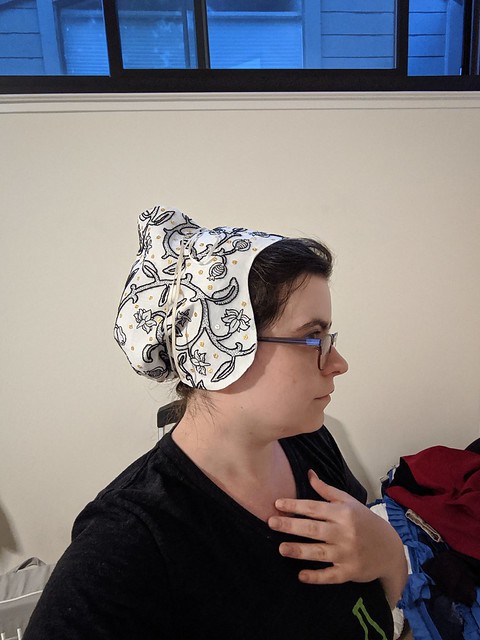
Came out very nice. Too bad that the average person will not be able to tell all of the work you put into it.
Hopefully people in the know will figure it out when I wear it around them!
This is so amazing!!!!
>
Thanks!
Beautiful handwork! I agree, I lost all my brain cells for a couple months too. I found doing some simple handwork the easiest, and then some simple little girl dresses. Some brain cells returned but still not enough to tackle anything complicated.
Val
Thank you! I’m still on the no-complicated fitting train (caftans, next up outerwear and parasol…)
Pingback: The Two Types of Blackwork Coifs | Avant Garbe
I haven’t tried this yet, but I’ll put this out there since I thought it up. I wanted to do some blackwork on heavy fustian or heavy linen for a petticoat. I saw a photo of a petticoat like that courtesy of the Costume Museum in Bath (or was it Manchester…well, anyways, I saw one). I could have done the whole graph paper insanity, and that would have been insanity, pure and simple. So then I came up with the idea of buying a digital projector and hanging/pinning up the fabric on my dining room wall, then projecting my image(s) of choice onto the fabric with the projector. Then I could happily trace away with something like a Micron Pigma pen, at least enough to do the embroidery. I haven’t bought my fustian yet (although I did buy a sample, sold as “scrim” from an English supplier. Of course I already forgot who I bought it from), nor have I purchased the projector yet. But that’s my plan.
Right now I’m stitching a smock like the one in the V&A (https://collections.vam.ac.uk/item/O78732/smock-part-unknown/) but not with those patterns/motifs. I got lazy and ordered pre-printed linen (admittedly heavier and coarser than I would have liked, but workable with a size 28 tapestry needle and Devere Yarns’ 18 thread (360 denier)) from Spoonflower (https://www.spoonflower.com/en/fabric/1365239-blackwork-1-by-thepixelpinup). I have been stitching away on sleeve 1 of 2. This is not quick, but I enjoy it.
The pre-printed fabric is such a clever idea!